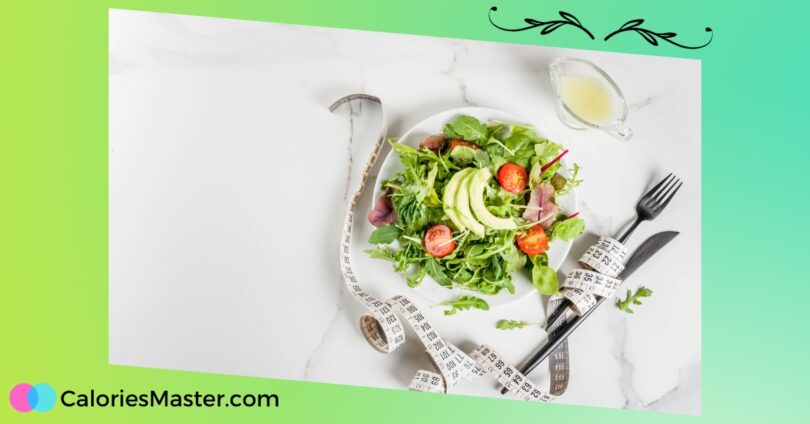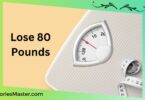Losing weight is a common goal for many people, but it can be difficult to know where to start. With so many diets and weight loss plans available, it can be overwhelming to choose the right one. However, a well-planned diet can be an effective way to lose weight and improve overall health.
A diet plan for weight loss should focus on reducing calorie intake while still providing essential nutrients. This can be achieved by increasing the consumption of fruits, vegetables, whole grains, and lean proteins while limiting processed and high-fat foods.
Additionally, incorporating regular exercise into your routine can help to boost weight loss and improve overall health.
Understanding Weight Loss
Losing weight can be a challenging task for many individuals. It requires discipline, dedication, and a proper understanding of how weight loss works. In this section, we will discuss the basics of weight loss and how it can be achieved through a healthy diet plan.
Calories and Weight Loss
Weight loss is achieved by burning more calories than you consume. This can be done by reducing your calorie intake, increasing your physical activity, or a combination of both. A calorie deficit of 3,500 calories results in a weight loss of approximately one pound.
It is important to note that not all calories are created equal. A diet high in processed foods and refined sugars can lead to weight gain, even if the calorie intake is low. On the other hand, a diet high in whole foods, such as fruits, vegetables, and lean protein, can aid in weight loss and improve overall health.
Macronutrients and Weight Loss
Macronutrients, such as carbohydrates, protein, and fat, play a crucial role in weight loss. A balanced diet that includes all three macronutrients can help you achieve your weight loss goals.
Carbohydrates provide energy for the body, but consuming too many can lead to weight gain. It is important to choose complex carbohydrates, such as whole grains and vegetables, over simple carbohydrates, such as sugary drinks and snacks.
Protein is essential for building and repairing muscle tissue, which can aid in weight loss. It also keeps you feeling fuller for longer periods, reducing the likelihood of overeating.
Fat is also an important macronutrient, but it should be consumed in moderation. Healthy fats, such as those found in nuts, seeds, and fatty fish, can improve heart health and aid in weight loss.
The Importance of Portion Control
Portion control is a vital aspect of weight loss. Even healthy foods can lead to weight gain if consumed in large quantities. Using smaller plates, measuring food portions, and avoiding distractions while eating can help you control your portion sizes and achieve your weight loss goals.
In summary, weight loss can be achieved through a healthy diet plan that includes a calorie deficit, a balance of macronutrients, and portion control. By making small, sustainable changes to your diet and lifestyle, you can achieve your weight loss goals and improve your overall health.
Importance of Balanced Diet
A balanced diet is essential for maintaining a healthy body weight and preventing chronic diseases such as diabetes, heart disease, and cancer. It provides the body with the necessary nutrients, vitamins, and minerals to function optimally. A balanced diet consists of a variety of foods from all food groups in the right proportions.
A balanced diet should include plenty of fruits, vegetables, whole grains, lean proteins, and healthy fats. Fruits and vegetables are high in vitamins and minerals and low in calories, making them an excellent choice for weight loss. Whole grains provide the body with fibre, which helps to regulate digestion and keep you feeling full for longer.
Lean proteins, such as chicken, fish, and beans, provide the body with essential amino acids needed for muscle growth and repair. Healthy fats, such as those found in nuts, seeds, and avocados, are essential for brain function and hormone production.
Eating a balanced diet can also improve your mood, increase energy levels, and reduce the risk of depression and anxiety. A balanced diet can also improve sleep quality, which is essential for overall health and well-being.
In summary, a balanced diet is crucial for maintaining a healthy body weight, preventing chronic diseases, and improving overall health and well-being. It is essential to eat a variety of foods from all food groups in the right proportions to ensure that your body is getting all the nutrients it needs.
Creating a Personalised Diet Plan
Identifying Dietary Needs
Before creating a personalised diet plan for weight loss, it is important to identify your dietary needs. This includes understanding your current eating habits, any food allergies or intolerances, and your daily calorie requirements.
To identify your daily calorie requirements, you can use an online calculator or consult a registered dietitian. It is important to note that calorie requirements vary based on age, gender, weight, and activity level.
Additionally, it is important to identify any food allergies or intolerances you may have. This will help you avoid certain foods and ensure that your diet plan is safe and healthy for you.
Setting Realistic Goals
When creating a personalised diet plan for weight loss, it is important to set realistic goals. This includes setting a realistic target weight loss and a timeline for achieving this goal.
It is important to remember that healthy weight loss is about losing weight gradually and sustainably. Aim to lose no more than 1-2 pounds per week.
It is also important to set goals for changing your eating habits. This includes incorporating more fruits, vegetables, and whole grains into your diet, and reducing your intake of processed and high-fat foods.
By setting realistic goals, you can create a personalised diet plan that is safe, healthy, and effective for achieving your weight loss goals.
Essential Nutrients for Weight Loss
Proteins
Proteins are essential for weight loss as they help in building and repairing muscles. They also keep you full for longer periods, reducing the chances of overeating. Some protein-rich foods include chicken, fish, lentils, beans, tofu, and Greek yoghurt.
Fibre
Fibre is another essential nutrient for weight loss. It helps in keeping you full for longer periods and aids in digestion. Some fibre-rich foods include whole grains, fruits, vegetables, nuts, and seeds.
Healthy Fats
Healthy fats are necessary for weight loss as they help in reducing inflammation and maintaining healthy cholesterol levels. Some healthy fat sources include olive oil, avocado, nuts, seeds, and fatty fish like salmon.
Vitamins and Minerals
Vitamins and minerals are essential for overall health and well-being. They also play a crucial role in weight loss. Some vitamin and mineral-rich foods include leafy greens, citrus fruits, berries, nuts, and seeds.
Incorporating these essential nutrients into your diet can help you achieve your weight loss goals. Remember to consult a healthcare professional before making any significant changes to your diet.
Meal Planning Strategies
Portion Control
Portion control is an important aspect of any weight loss diet plan. Eating too much of anything, even healthy foods, can lead to weight gain. Here are some tips for controlling your portion sizes:
- Use smaller plates and bowls to trick your brain into thinking you’re eating more than you are.
- Measure out your food using measuring cups or a food scale to ensure you’re not overeating.
- Eat slowly and savour each bite. This can help you feel fuller faster and prevent overeating.
Meal Timing
The timing of your meals can also play a role in weight loss. Here are some tips for meal timing:
- Eat breakfast within an hour of waking up to kickstart your metabolism.
- Aim to eat every 3-4 hours to keep your metabolism going and prevent overeating.
- Avoid eating late at night, as this can lead to weight gain.
Food Variety
Eating a variety of foods can help ensure you’re getting all the nutrients your body needs while also preventing boredom with your diet. Here are some tips for adding variety to your meals:
- Experiment with different fruits and vegetables to add colour and flavour to your meals.
- Try new recipes and cuisines to keep things interesting.
- Don’t be afraid to indulge in your favourite treats in moderation.
Remember, weight loss is a journey and there’s no one-size-fits-all approach. These meal planning strategies can help you get started on your weight loss journey, but it’s important to find what works best for you and your lifestyle.
Incorporating Physical Activity
Incorporating physical activity into your weight loss plan is crucial for achieving your goals. Not only does exercise burn calories, but it also helps to increase your metabolism, build muscle and improve your overall health.
The NHS recommends that adults should aim for at least 150 minutes of moderate-intensity exercise or 75 minutes of vigorous-intensity exercise per week. This can be split up into smaller sessions throughout the week to make it more manageable.
When it comes to choosing the right type of exercise, it’s important to find something that you enjoy and can stick to. This could be anything from running and cycling to swimming or dancing.
In addition to cardio, it’s also important to incorporate strength training into your routine. This will help to build muscle and increase your metabolism, allowing you to burn more calories throughout the day.
Here are some tips for incorporating physical activity into your weight loss plan:
- Start small and gradually increase the intensity and duration of your workouts
- Mix it up by trying different types of exercise
- Find a workout buddy or join a fitness class to keep you motivated
- Take regular breaks throughout the day to stretch and move around
- Set achievable goals and track your progress to stay motivated
Remember, physical activity is just one part of a healthy weight loss plan. Be sure to also focus on healthy eating habits and getting enough rest and recovery time.
Monitoring Progress
When it comes to weight loss, monitoring progress is essential to stay motivated and track your success. Here are a few ways to monitor your progress:
Weighing yourself
Weighing yourself regularly is a simple way to monitor your progress. It’s recommended to weigh yourself once a week at the same time of day and wear similar clothing to get an accurate measurement. Keep track of your weight in a journal or on a spreadsheet to see your progress over time.
Measuring body fat percentage
Measuring your body fat percentage is another way to monitor your progress. It’s a more accurate measurement of your body composition than just weight. You can measure body fat percentage using a body fat scale, callipers, or by getting a professional assessment.
Taking measurements
Taking measurements of your waist, hips, arms, and thighs can also help you track your progress. As you lose weight, you may notice changes in your body shape and size, even if the number on the scale isn’t changing much.
Keeping a food diary
Keeping a food diary can help you track your calorie intake and make adjustments to your diet as needed. Write down everything you eat and drink, including portion sizes and calorie counts. You can use a paper journal or a smartphone app to track your food intake.
Tracking exercise
Tracking your exercise can help you see how much activity you’re getting and make adjustments to your workout routine if needed. Keep track of the type of exercise, duration, and intensity in a journal or on a fitness app.
Overall, monitoring your progress can help you stay on track and motivated to reach your weight loss goals.
Overcoming Weight Loss Plateaus
When you start a weight loss program, you may experience rapid weight loss initially. However, as your body adapts to the changes, your weight loss may slow down or even come to a halt. This is known as a weight loss plateau. Here are some tips to overcome weight loss plateaus:
1. Re-evaluate your calorie intake
If you’ve been following the same calorie intake for a while, your body may have adapted to it. To overcome a weight loss plateau, you may need to adjust your calorie intake. Use a calorie tracker to monitor your intake and adjust it accordingly.
2. Increase your physical activity
Another way to overcome a weight loss plateau is to increase your physical activity. Adding more exercise to your routine can help burn more calories and jumpstart your weight loss again. Consider adding strength training to your routine to build muscle and boost your metabolism.
3. Change up your routine
Doing the same exercises and eating the same foods every day can lead to a weight loss plateau. To overcome it, try changing up your routine. Add new exercises to your routine, try new healthy recipes, and find new ways to stay motivated.
4. Get enough sleep
Sleep is essential for weight loss. Lack of sleep can lead to weight gain and a weight loss plateau. Aim for at least 7-8 hours of sleep each night to help your body recover and reset.
5. Stay hydrated
Drinking enough water is important for weight loss. Dehydration can lead to a weight loss plateau. Aim for at least 8 glasses of water each day to stay hydrated and help your body function properly.
By implementing these tips, you can overcome a weight loss plateau and continue on your weight loss journey. Remember, weight loss is a journey, not a destination. Stay committed and stay motivated, and you will reach your weight loss goals.
Maintaining Weight Loss
After achieving your weight loss goals, it is important to maintain your new weight to avoid regaining the weight you worked so hard to lose. Here are some tips to help you maintain your weight loss:
1. Continue to monitor your food intake
While you may be tempted to relax your diet after reaching your weight loss goal, it is important to continue monitoring your food intake. Keep a food diary or use a calorie tracking app to ensure that you are consuming the right amount of calories for your body.
2. Stay active
Regular exercise is essential for maintaining weight loss. Aim for at least 30 minutes of moderate exercise most days of the week. Find an activity that you enjoy, such as walking, cycling or swimming, to help you stay motivated.
3. Keep healthy snacks on hand
Having healthy snacks on hand can help you avoid reaching for unhealthy options when hunger strikes. Try keeping fruit, vegetables, nuts or low-fat yoghurt on hand for when you need a quick snack.
4. Avoid skipping meals
Skipping meals can lead to overeating later in the day. Aim to eat three balanced meals a day, and if you need a snack, choose a healthy option.
5. Stay hydrated
Drinking plenty of water can help you stay hydrated and avoid overeating. Aim to drink at least eight glasses of water a day.
By following these tips, you can maintain your weight loss and continue to live a healthy, active lifestyle.









